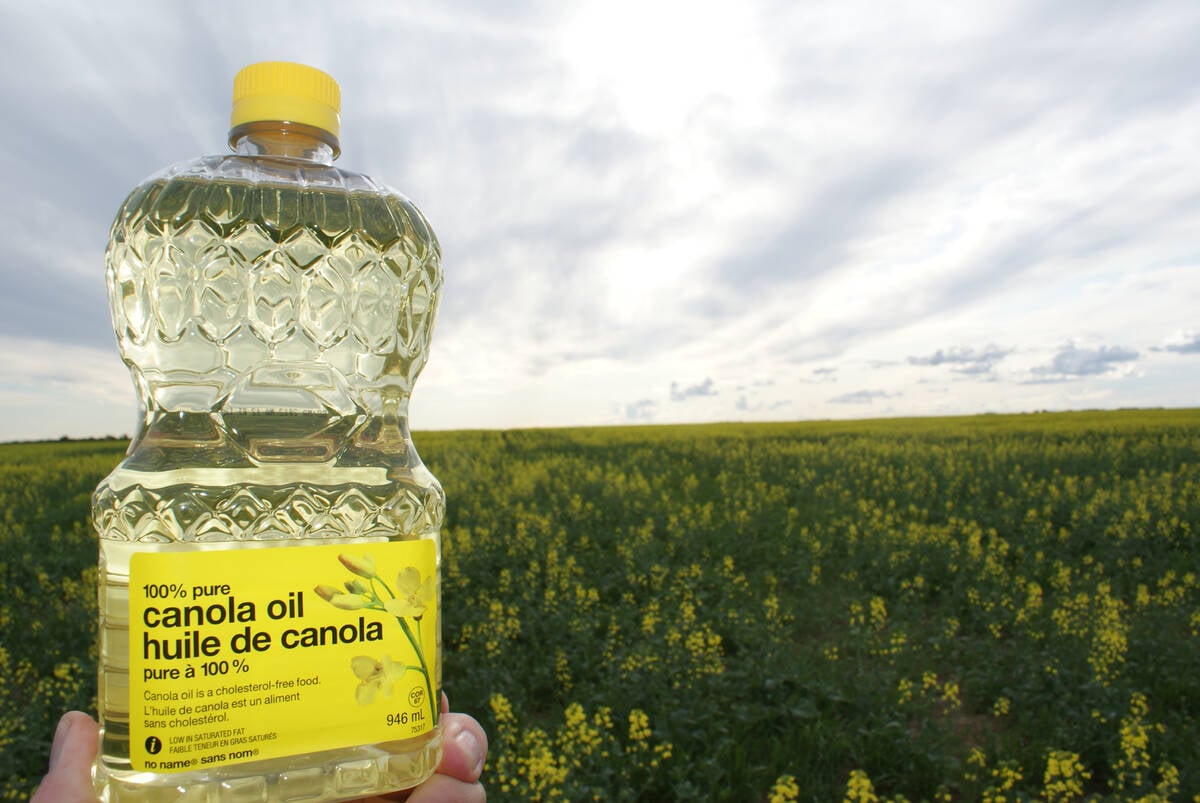SASKATOON — Canola oil demand from the global biofuel sector could slump in 2025-26 for the first time in a decade, according to a grain industry analyst.
Dennis Voznesenski, agricultural economist with the Commonwealth Bank of Australia, said global production of biodiesel and renewable diesel is forecast to decline 2.4 million tonnes, which will weigh on feedstock demand and prices.
European Union production is forecast to fall to 14.8 million tonnes from 15.5 million tonnes last year.
Read Also

Short rapeseed crop may put China in a bind
Industry thinks China’s rapeseed crop is way smaller than the official government estimate. The country’s canola imports will also be down, so there will be a lot of unmet demand.
“Not only is European biodiesel production forecast down this year, but European canola production itself is up due to favourable weather,” he said in a recent Agri Commodity Weekly Alert report.
The European Commission is forecasting 19.92 million tonnes of rapeseed production, which would be 12 percent above the five-year average.
U.S. production of biodiesel/renewable diesel is forecast at 14.2 million tonnes, down from 16 million tonnes last year.
“Poor profit margins for biofuel producers have curbed production,” said Voznesenski.
RIN values are down 47 per cent from last year. They are government credits that biofuel producers receive for producing a unit of biofuel.
Western Producer Markets Desk analyst Bruce Burnett thinks it might be premature to be forecasting a drop in U.S. biofuel production.
The U.S. Environmental Protection Agency was poised to make its final rule on biomass-based renewable volume obligations sometime around the end of October.
However, the decision could be delayed by the partial government shutdown that began Oct. 1, which furloughed nearly 90 per cent of EPA staff, according to a Biodiesel Magazine article.
The EPA released its proposed rule in June, which set a biomass-based diesel mandate of 5.61 billion gallons for 2026 and 5.86 billion gallons for 2027.
That is a massive increase from the 3.35-billion-gallon mandate for 2025 and exceeded the 5.25 billion gallons for which a coalition of oil and biofuel groups had been lobbying .
The bad news for Canadian canola growers is that the EPA also proposed that foreign biofuels and feedstocks would only generate 50 per cent of the RIN credit value relative to U.S. biofuels and feedstocks.
Burnett said U.S. demand for Canadian canola oil will greatly depend on what the EPA decides to do in its final rule because nobody is making any blending decisions based on the proposed rule that came out in June.
“The demand doesn’t appear until the regulation is finalized,” he said.
He agrees with Voznesenski that the forecast for slumping biodiesel/renewable diesel demand in the EU and the region’s large rapeseed crop is troubling.
That was supposed to be a market that could buy more Canadian canola seed, helping offset the recent loss of the Chinese market due to its imposition of a 75.8 per cent anti-dumping duty on Canadian canola seed imports.
The good news is that the U.S. Department of Agriculture is forecasting 229.28 million tonnes of global vegetable oil demand in 2025-26, a 6.78 million tonne increase over last year.
“That’s a substantial amount of vegetable oil,” said Burnett.
That seems to indicate that demand from the food sector is strong, even if biofuel demand might be waning, but it remains to be seen which vegetable oil will benefit the most from that increased demand, he said.
















